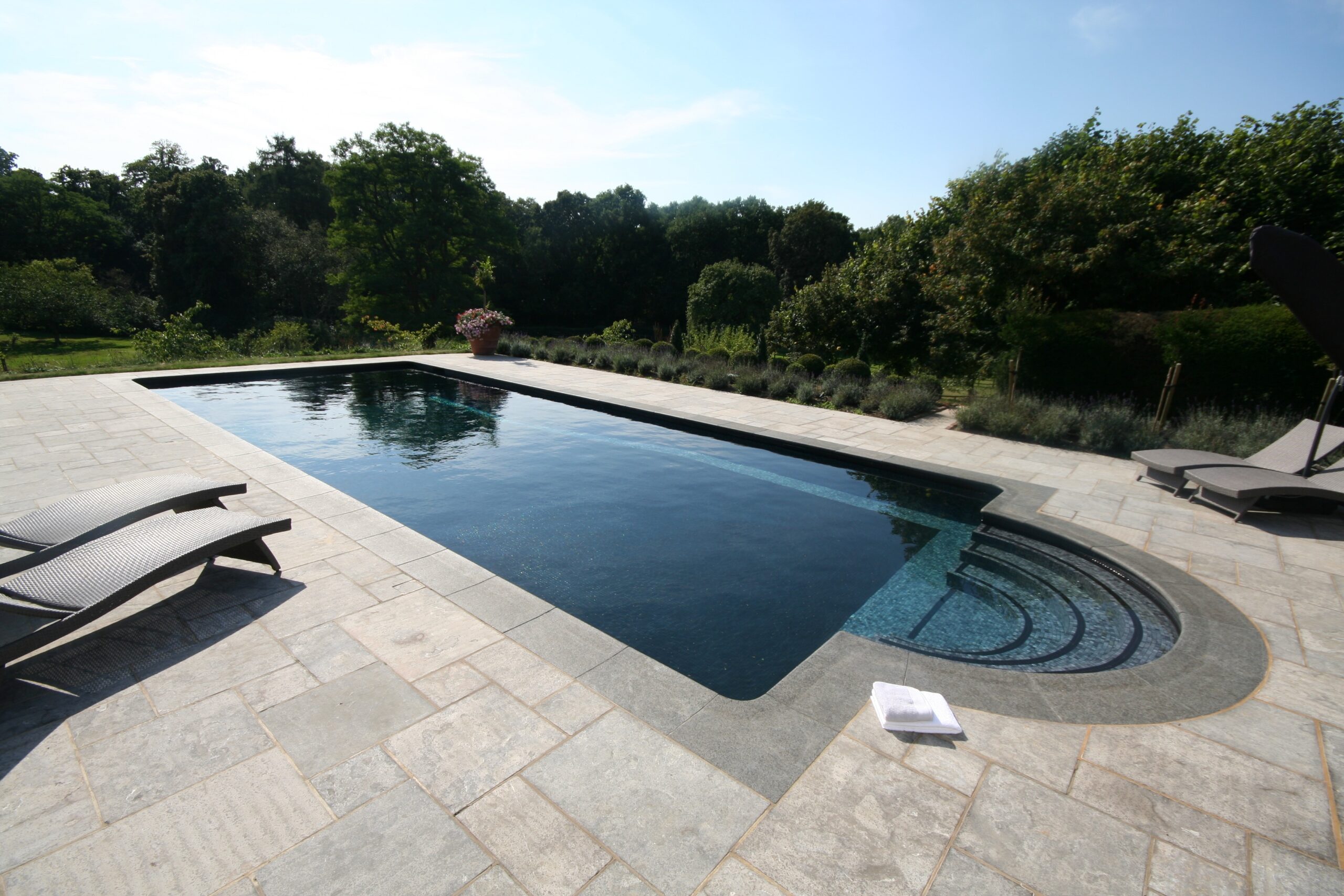Discover the hidden factors that determine the perfect swimming pool construction depth – get it wrong, and you could be diving into a costly mistake.
Understanding Pool Depth Fundamentals
When it comes to swimming pool construction, depth isn’t just about how far down you can dive – it’s a crucial decision that impacts everything from safety and functionality to long-term maintenance costs. In the UK, where swimming pool construction has seen a 15% increase since 2021, understanding optimal pool depth is more important than ever. The average swimming pool depth ranges from 1.2 to 2.4 metres (4 to 8 feet), but these figures only tell part of the story. Your pool’s depth should align with its primary purpose, whether that’s family recreation, competitive swimming, or property value enhancement. Recent studies show that 78% of UK pool owners wish they’d given more consideration to depth planning during the construction phase.
Different Types of Pool Zones and Their Ideal Depths
- Entry Area (0.6-0.9m / 2-3 feet): Essential for safe pool access, ideal for toddlers and non-swimmers. Consider beach entries or graduated steps for enhanced accessibility.
- Shallow End (0.9-1.2m / 3-4 feet): Perfect for family activities, water aerobics, and casual swimming. This depth accommodates most adults while standing.
- Swimming Zone (1.2-1.5m / 4-5 feet): Optimal for lap swimming and general recreation. Statistics show this is the most used section in 65% of residential pools.
- Deep End (1.7-2.4m / 5.5-8 feet): Suitable for diving and advanced swimming activities, though modern trends show fewer homeowners opting for extreme depths.
Factors Influencing Your Pool Depth Decision
The perfect pool depth isn’t a one-size-fits-all solution. British homeowners must consider multiple factors when determining their ideal pool depth. Property size plays a crucial role, with UK building regulations requiring specific setbacks and safety zones around pools. Budget considerations are equally important – deeper pools can increase construction costs by 20-30% due to additional excavation, materials, and structural requirements. The primary intended use of your pool should guide your depth decisions. For family-oriented pools, a combination of shallow and moderate depths (0.9-1.5m) often proves most practical, while serious swimmers might prefer a consistent depth of 1.5-1.8m throughout.
Construction Considerations for Different Pool Depths
- Soil Conditions: UK soil types vary significantly, affecting excavation requirements and structural support needs. Clay-heavy soils, common in many parts of Britain, may require additional engineering for deeper pools.
- Material Selection: Gunite pools offer the most flexibility in depth design, while fibreglass pools typically come with pre-determined depth profiles.
- Structural Requirements: Deeper pools need enhanced wall reinforcement and may require specialised engineering solutions, particularly in areas with high water tables.
- Water Systems: Depth affects circulation patterns and filtration requirements, with deeper pools needing more powerful pumping systems.
Professional Recommendations and Best Practices
Leading UK pool construction experts emphasise the importance of balanced design. The current industry standard recommends a minimum of three depth zones for optimal versatility. Modern pool construction trends show a shift towards moderate depths (1.2-1.8m) that accommodate multiple uses while minimising safety risks and maintenance costs. Crucial safety features include clearly marked depth indicators, non-slip surfaces, and appropriate transitions between depth zones. Professional builders recommend gradual slopes of no more than 1:12 for comfortable depth transitions.
Making Your Final Depth Decision
Begin your depth planning process by conducting a thorough assessment of your needs and constraints. Consider these essential steps:
- Evaluate your primary pool uses and user demographics
- Consult with at least three certified pool contractors
- Review local building regulations and safety requirements
- Calculate the impact of depth choices on construction budget
- Consider long-term maintenance implications
- Assess property resale value impact – studies show pools with versatile depths can increase property value by up to 7%
Conclusion: Getting It Right First Time
The depth of your swimming pool is a decision that will impact your enjoyment and property value for years to come. While trends in swimming pool construction continue to evolve, the fundamentals of good depth planning remain constant. Focus on versatility, safety, and long-term value rather than following temporary trends. Remember that professional consultation is crucial – 83% of pool-related issues stem from inadequate planning during the construction phase. Take time to research, plan, and consult with experts to ensure your pool depth perfectly matches your needs and enhances your property’s value for years to come.
FAQ
What is the most affordable way to build a pool?
For many homeowners, vinyl liner pools stand out as the most cost-effective option. They are less expensive initially than their fiberglass or concrete counterparts. This lower initial cost can make a significant difference for families looking to maximize their investment.
How much is it a year to own a pool?
The annual cost to maintain your pool In addition to pool maintenance costs, you should plan to spend an average of $3,000 to $5,000 per year for repairs and utilities. Many homeowners initially underestimate how much electricity a swimming pool uses.
How do people afford to build a pool?
Home equity loans With a home equity loan for a pool, you can typically borrow up to 85% of your home’s value, minus what you owe on your mortgage. Loan terms range from 5 to 30 years, and interest rates generally start around 8%, depending on your credit and lender.
What is the minimum cost to build a swimming pool?
Minimum Cost to Build a Swimming Pool The price of an in-ground pool in India ranges from ₹1.5 lakhs to ₹3.5 lakhs. Choosing expensive materials and customizations can go well over ₹10 lakhs.
How much does it cost to install a swimming pool?
Location
Sources
[1] https://www.centralpoolsandspas.com
[2] https://www.youtube.com/watch?v=bgTP3ouHVz8
[3] https://www.houzz.com/professionals/pools-and-spas/cambridge-ma-us-probr0-bo~t_11795~r_4931972


Leave a Reply